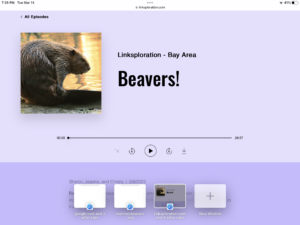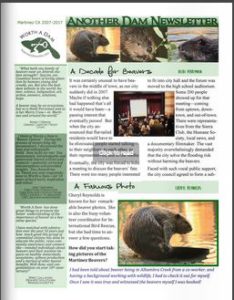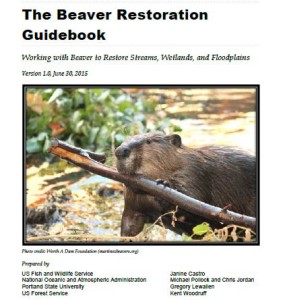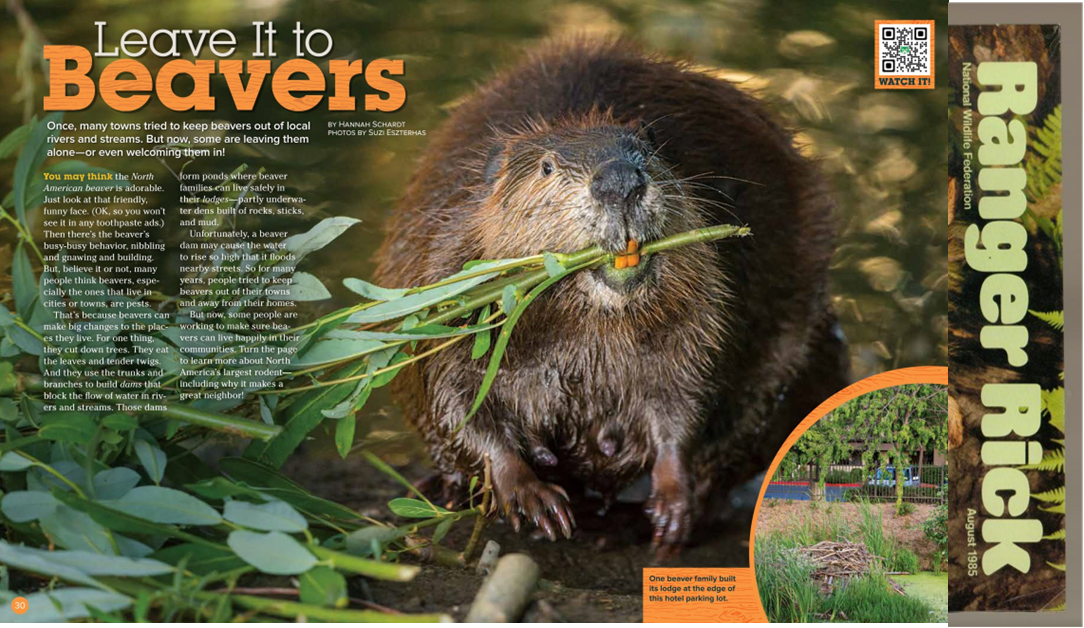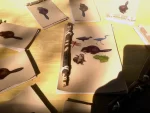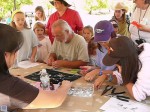England just isn’;t sure beavers fit onto their landscape anymore, but all indications point in their favor. I don’t know what they’re expecting. A golden sword rising from the misty lake to show they belong? Maybe.
Wild beavers reduce flood risk and boost wildlife, study finds
 Beavers living wild on an English river have reduced the risk of flooding for local people and boosted wildlife, a five-year trial has found.
Beavers living wild on an English river have reduced the risk of flooding for local people and boosted wildlife, a five-year trial has found.
The aquatic mammals living on the River Otter in Devon have caused some localised problems for several landowners, but these could be addressed successfully with “active management”, the study said.
Other wildlife, including fish, water voles, amphibians and birds, have benefited from the presence of the beavers living on the river and creating new habitat.
The findings are the culmination of a five-year study of the first licensed release of beavers into the wild in England since they were hunted to extinction more than 400 years ago.
It found the wild beavers on the south Devon river provided more benefits to people and the landscape than the costs they caused.
Good lord. Who among us could make the same claim. Have YOU ever solved more problems than you caused? Have I? Well I guess England is a mean judge of character. Because they’re backing this claim up with data.
 Research by the team of scientists, overseen by Professor Richard Brazier from the University of Exeter, found they are providing benefits to people, including in the flood-prone community of East Budleigh.
Research by the team of scientists, overseen by Professor Richard Brazier from the University of Exeter, found they are providing benefits to people, including in the flood-prone community of East Budleigh.
Beavers have constructed six dams upstream of the village, which have measurably and significantly reduced peak flood flows through the community, the report said.
Evidence from another trial in north Devon, where beavers in an enclosure have built 13 dams and ponds, shows they also play a role in filtering soil, manure, slurry and fertilisers from farmland.
Despite concerns that beaver dams might affect fish populations, the research found that in the pools created by damming the streams there were 37% more fish than in comparable stretches of the river with no dams.
Get the hell out! 37% More fish in beaver ponds? It’s almost like putting a percent sign next to an actual fact makes it sound MORE true. (4 out of 5 dentists recommend sugarless gum for their patients who chew gum sort of thing). There are more fish in beaver ponds. 37% more. We counted and did the stats. Now do you believe us?
Devon Wildlife Trust’s Mark Elliott, who leads the River Otter Beaver Trial, said “I think we’ve all been surprised by these amazing animals’ ability to thrive, once again, in our wetland ecosystems.
“It also shows their unrivaled capacity to breathe new life into our rivers and wetlands, very few of which are in good health.”
Unrivaled the right word, Mark. What they do has never been done by anyone else. Nobody does it better. No one else even comes close. Let beavers do their jobs and if you want to count up those jobs on your little clipboards go right ahead.
Excuse me. I feel a song coming on.
[wonderplugin_video iframe=”https://youtu.be/uWWwKDttHnM” lightbox=0 lightboxsize=1 lightboxwidth=960 lightboxheight=540 autoopen=0 autoopendelay=0 autoclose=0 lightboxtitle=”” lightboxgroup=”” lightboxshownavigation=0 showimage=”” lightboxoptions=”” videowidth=600 videoheight=100 keepaspectratio=1 autoplay=0 loop=0 videocss=”position:relative;display:block;background-color:#000;overflow:hidden;max-width:100%;margin:0 auto;” playbutton=”https://www.martinezbeavers.org/wordpress/wp-content/plugins/wonderplugin-video-embed/engine/playvideo-64-64-0.png”]
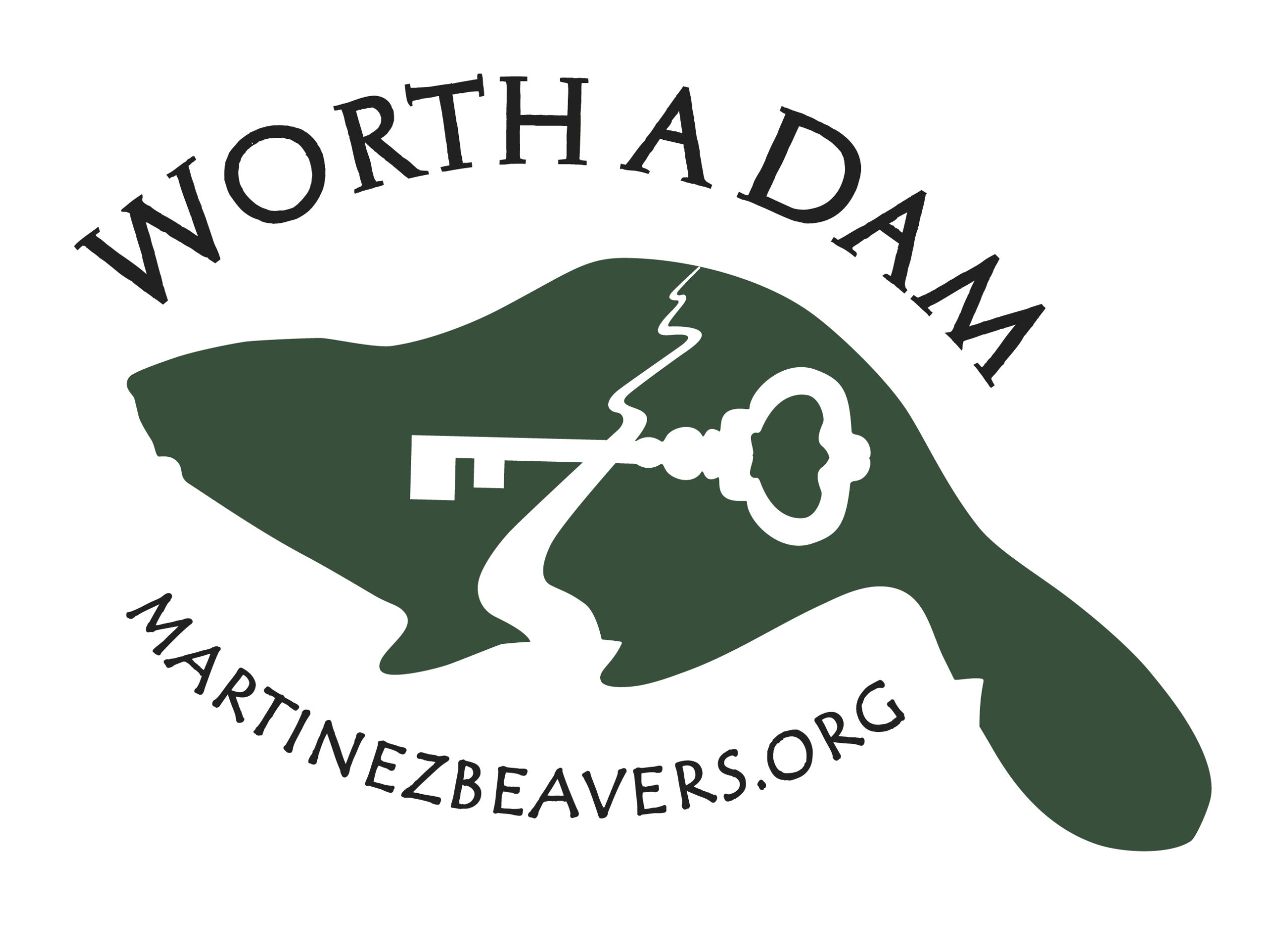

 Many would be surprised to realize that beavers, in the same family as mice and squirrels, create rich, biodiverse habitats unrivaled by any other creature on our planet. Beavers don’t just make themselves homes and blockade rivers; they create sanctuary for everything from tiny invertebrates up to our most iconic species such as deer, moose, and bear. In fact, the effects of their actions are so great that much contemporary research and thought revolves around these creatures being indispensable buffers in a world becoming ever more variable and inhospitable by the climate change we’ve manufactured.
Many would be surprised to realize that beavers, in the same family as mice and squirrels, create rich, biodiverse habitats unrivaled by any other creature on our planet. Beavers don’t just make themselves homes and blockade rivers; they create sanctuary for everything from tiny invertebrates up to our most iconic species such as deer, moose, and bear. In fact, the effects of their actions are so great that much contemporary research and thought revolves around these creatures being indispensable buffers in a world becoming ever more variable and inhospitable by the climate change we’ve manufactured.





